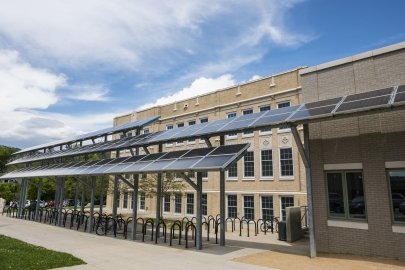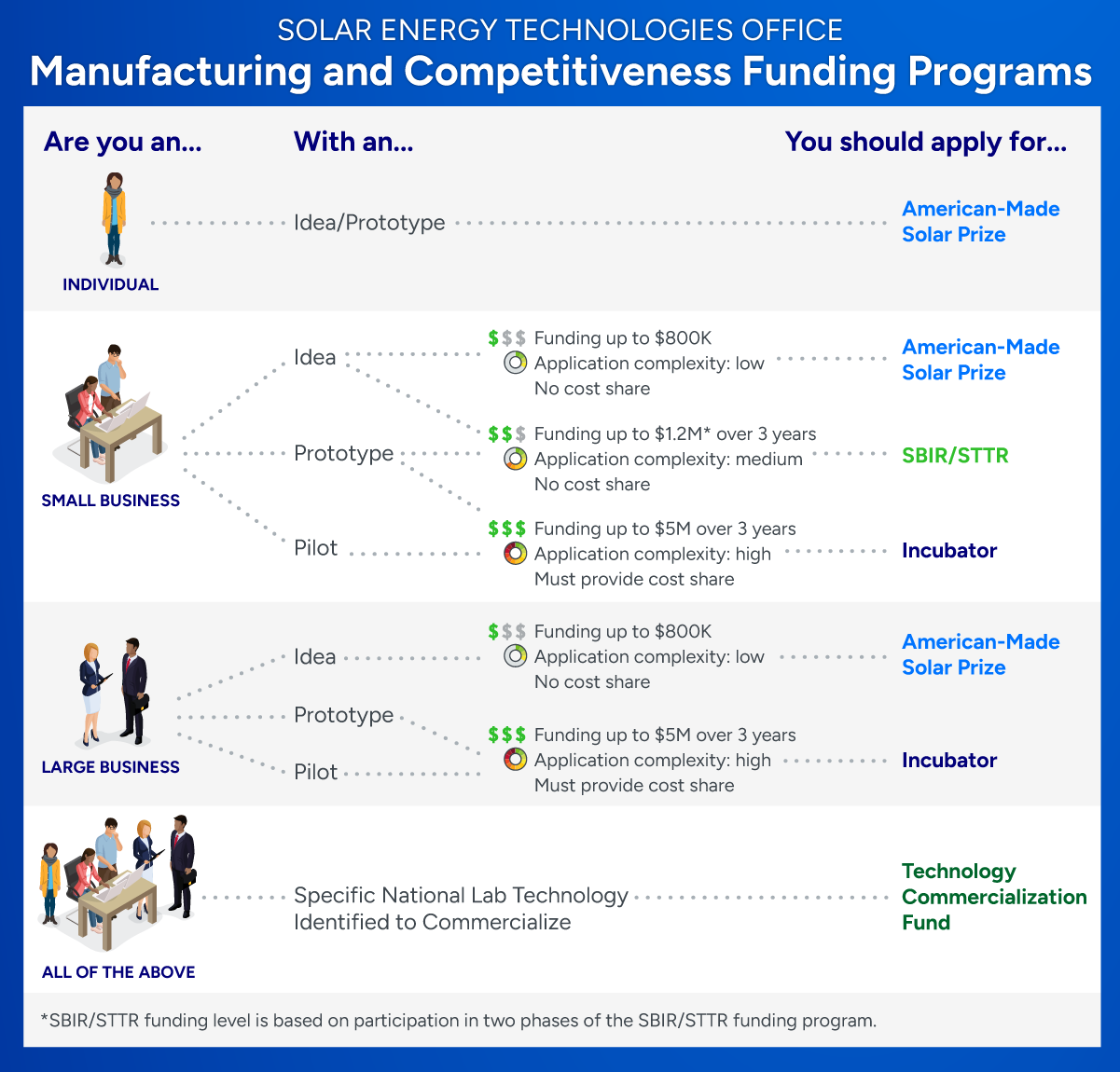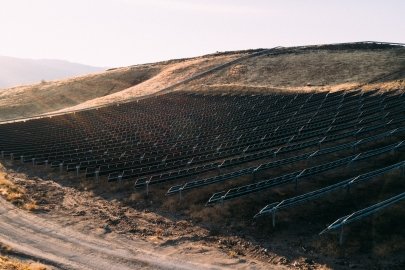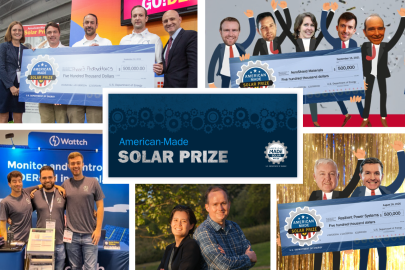The U.S. Department of Energy Solar Energy Technologies Office (SETO) supports solar manufacturing and competitiveness research to develop pathways to commercialization for high-impact innovation in the solar industry. The goal is to move technologies to market by strengthening innovative concepts and increasing their readiness for greater private sector investment and scale-up to commercialization.
Research and development in solar manufacturing and competitiveness helps to build a strong clean energy manufacturing sector and supply chain that produce cost-competitive clean energy products and keep pace with the rising domestic and global demand for affordable solar energy. Additionally, this research area helps small businesses develop ideas into successful technologies that benefit the solar industry. Cost analysis is also a critical component that ties all of SETO’s work together to measure the current state of the solar industry. All of this work will help SETO reach its goal of making solar energy more affordable and equitable.
In September 2021, DOE released the Solar Futures Study, a report that explores the role of solar energy in achieving these goals as part of a decarbonized U.S. electric grid. Learn more about SETO’s goals.
Within SETO’s manufacturing and competitiveness research area, efforts are focused on several topics. Learn more about them below.
Research Topics
-
- SunShot
Solar manufacturing refers to the fabrication and assembly of materials across the solar value chain.March 6, 2024 -
 SETO supports entrepreneurs and small businesses in their efforts to develop and advance solar technologies.February 19, 2021
SETO supports entrepreneurs and small businesses in their efforts to develop and advance solar technologies.February 19, 2021
-
 Dual-use photovoltaic (PV) technologies, also known as dual-use PV, are a type of PV application where the PV panels serve another function besides the generation of electricity.
Dual-use photovoltaic (PV) technologies, also known as dual-use PV, are a type of PV application where the PV panels serve another function besides the generation of electricity. -
 Solar energy cost and data analysis examines technology costs, location-specific competitive advantages, and assesses the performance of solar energy.
Solar energy cost and data analysis examines technology costs, location-specific competitive advantages, and assesses the performance of solar energy.
SETO funding for manufacturing and competitiveness research projects covers a wide variety of technologies including photovoltaics, concentrating solar power, and power electronics, as well as non-hardware costs such as customer acquisition, permitting, financing, interconnection, inspection, and workforce development. Generally, projects target funding gaps that occur in the initial proof of concept, pre-commercial, and pilot operation stages. These projects are managed by the manufacturing and competitiveness team. Reports resulting from research projects can be found on the Office of Science and Technical Information (OSTI) website.
In 2018–2020, SETO conducted a rigorous analysis to assess the impact of the Incubator program on the likelihood of its awardees later raising follow-on funding. SETO published the findings in March 2022—read the full report.

As shown in the graphic above, funding for manufacturing and competitiveness research is mainly divided between funding opportunities, the American-Made Solar Prize, the Small Business Innovation Research and Small Business Technology Transfer (SBIR/STTR) program, the Technology Commercialization Fund, and SETO's Incubator Program.
Learn more about SETO’s funding programs and current funding opportunities.
Manufacturing and Competitiveness Success Stories
-
 Siting solar arrays is a challenge shared by developers, state and local governments, and communities. With the help of Energy Department funding, Nevados developed hardware that opens new sites by enabling solar panel installation on uneven terrain.
Siting solar arrays is a challenge shared by developers, state and local governments, and communities. With the help of Energy Department funding, Nevados developed hardware that opens new sites by enabling solar panel installation on uneven terrain. -
 Since 2018, the American-Made Solar Prize has been energizing U.S. innovations and entrepreneurs. Hear from past winners to learn how the Prize has contributed to their success and find out what they’ve been able to accomplish since their victories.
Since 2018, the American-Made Solar Prize has been energizing U.S. innovations and entrepreneurs. Hear from past winners to learn how the Prize has contributed to their success and find out what they’ve been able to accomplish since their victories. -
 Terabase Energy is transforming the traditionally manual processes of designing arrays, delivering modules, and installing them at the site.
Terabase Energy is transforming the traditionally manual processes of designing arrays, delivering modules, and installing them at the site. -
 DOE awarded funding to start-up company EnergySage to build an online marketplace for rooftop solar systems and make the process of solar adoption more consumer-centric.
DOE awarded funding to start-up company EnergySage to build an online marketplace for rooftop solar systems and make the process of solar adoption more consumer-centric.

